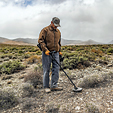All Articles
Legislative and Regulatory Update
February 2002 by Staff
• Changes to wetlandsThe U.S. Army Corps of Engineers’ rules regarding wetlands changed under new regulations published by the Bush administration January 14, 2002.
Instead of requiring acre-for-acre restoration on each project, for example, the new regulations state only that there be “no net loss” of wetlands in any of the corps’ 38 U.S. districts, which are established on the basis of watersheds rather than state boundaries.
John Studt, chief of the corps’ regulatory branch, said the new permit requirements “will do a better job of protecting aquatic ecosystems while simplifying some administrative burdens for the regulated public.”
The National Association of Home Builders described the new permits as a positive first step, though it also said the process still was insufficiently streamlined.
“This is the first time in the 25 years of the program that the corps has not added further limitations or more paperwork requirements,” said Susan Asmus, a vice president for the group.
Left in place was a Clinton-era requirement that developers get a permit for any project involving more than a half-acre of wetlands. Until 2000, developers had to get government approval only if more than three acres of wetlands were affected.
The new regulations also eliminate some restrictions on development in flood plains and revoke a prohibition on filling more than 300 linear feet along streams that don’t flow year-round as long as a waiver is obtained.
• 43 CFR 3809
ICMJ submitted seven pages of comments to BLM regarding final and proposed changes to 3809 regulations on behalf of our readers. Also included was a request to extend the comment period for a reasonable time after the BLM website is restored.
BLM’s website, along with several other government websites, were taken off-line because of a court order resulting from a dispute over Indian Trust Funds. Apparently the Indian Trust Fund accounts were accessible and exposed to hackers through several government websites.
With the BLM website off-line, e-mailed comments regarding 3809, and other regulations with open comment periods, were rejected and the sender received an error message beginning around mid-December. BLM officials in Washington, D.C., stated they were currently considering extending the comment period on proposed 3809 changes because of the e-mail problems.
It would be in your best interest to send your own letter to BLM requesting extension of the comment period, along with your comments, if you were unable to submit them because of the e-mail problems.
Send your comments to:
Director (630), BLM
Administrative Record
Room 401 LS
1849 C Street, NW
Washington, DC 20240
• Scaled-back version of CARA passes in the dead of night
Near the midnight hour of December 20, 2001, a scaled-back version of the Conservation and Reinvestment Act, also referred to as the Condemnation and Relocation Act, was approved in the Senate without a recorded vote. The sponsors waited until the building was almost empty, then passed bill number S 990 without any recorded vote. Apparently a seldom used procedure allowed the bill to pass when no objections were made—there was virtually no one left in the building.
Senate bill S 990 authorizes the expenditure of up to $600 million per year for “acquisition of an area of land or water that is suitable or capable of being made suitable for feeding, resting, or breeding by wildlife.” No prohibitions were made to prevent condemnation of land.
In a strange twist, Senator Mike Crapo of Idaho, who is normally a staunch supporter of property rights, was one of the few who sponsored the bill. If you would like to contact Senator Crapo, you can fax him at (202) 228-1375, or go to www.senate.gov and click on his email link.
Now would be a good time to contact your senator to let him or her know your position. Contact information for public officials is available on the home page of our website at www.icmj.com
• Sierra Nevada Framework
The Bush Administration recently approved the Clinton-era forest plan known as the Sierra Nevada Framework.
The plan changes much of the focus to protection of old growth trees and endangered species from timber production.
Mark Rey, USDA undersecretary for natural resources, announced that there is still some room for adjustments, and those decisions will be deferred to Jack Blackwell, head of California’s national forests.
Blackwell is authorized to implement the Sierra plan in coordination with the Quincy Library Group Plan, an alternative Sierra Nevada management plan that emphasized selective logging to reduce fire risk. The Quincy Library Group Plan was developed with local input, and was endorsed by many members of both the Senate and the House, but was not chosen by the USDA as the final management plan.
Frank Stewart, a forester for the Quincy Library Group, said he was profoundly disappointed by Rey’s announcement.
“It does nothing to address fire, fuel loads and local economies,” he said. All it does is continue the public process and ensure fuel reduction will be accomplished (through wildfires). For every two acres thinned in California last year, two burned up.”
According to Dave Bischel, president of the California Forestry Association, the plan takes “the national forests (of the Sierra Nevada), closes a great big door on them, locks them up and throws away the key. It says we’re not going to let people use them.”
Rey acknowledged that his decision left the plan “ripe for judicial review.” He added, “I urge (everyone) to evaluate the plan on its merits rather than argue about who shot John.”

The Power of Mining Districts
...Most importantly, the mining districts can open the federal land to multiple-use by the public on principles of inclusion rather than the present-day exclusions...
Melman on Gold & Silver
Deadlines are something we must live with at ICMJ as with any other publication, and as this columnist’s deadline approached early Tuesday morning of September 11, I turned on the financial channel to get some last pre-market commentary before completing this month’s column. What I saw was virtually beyond belief. A jetliner had just crashed into one of the two towers of the World Trade Center...
Suit Filed to Stop Mining in Northern California
The Western Mining Action Project, representing the Karuk Tribe of California, has filed suit to stop mining on the Salmon, Klamath and Scott Rivers, and their tributaries in Northern California.
Ask The Experts: Should I remove someone else’s claim post from my claim?
Q: Can and should you remove their poles and notice right then and there or should you wait until you have convinced them of their trespass?
What's The Best Way To Invest In Gold Or Silver?
 For those of you who don’t have the time or the means available to find gold, or you are just in the wrong part of the country, there are plenty of options available to purchase precious metals.
For those of you who don’t have the time or the means available to find gold, or you are just in the wrong part of the country, there are plenty of options available to purchase precious metals.
Talking Metal Detectors with Brent Weaver of Garrett
 … I recently had the opportunity to sit down with Brent Weaver, Garrett’s chief design engineer to talk about gold-oriented detectors, how they work and how prospectors can get the most out of them.
… I recently had the opportunity to sit down with Brent Weaver, Garrett’s chief design engineer to talk about gold-oriented detectors, how they work and how prospectors can get the most out of them.
Legislative and Regulatory Update
• Make your votes count
• Court tells Forest Service many access fees are illegal
• Kensington update
Subscription Required:
The Bawl Mill
• Federal and State Biologists Accused of Planting Evidence
• Placer Gold in New Mexico
• Mining Deaths Drop to New Low in 2001
• Prospecting for Meteorites with a Metal Detector
• Aussie Gold—A Look at Victoria
• The Rand of South Africa
• Picks & Pans: Arizona Desert Drywashing Adventure
• 2001 World Gold Panning Championships
• Throw-Away Gold: Back to Basics
• Placer Gold Near Fairbanks, Alaska
• The "Drumstick"
• Company Notes
• Editorial
• Looking Back
• Melman on Gold & Silver
• Mining Stock Quotes and Mineral & Metal Prices
Free:








